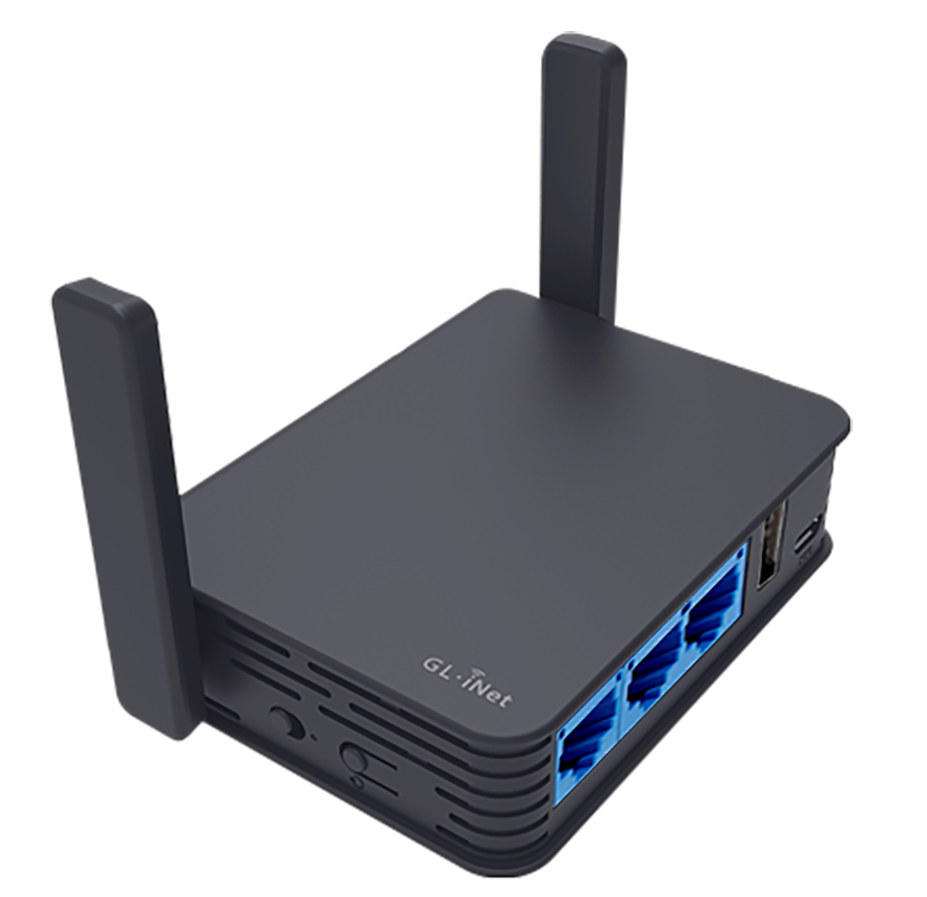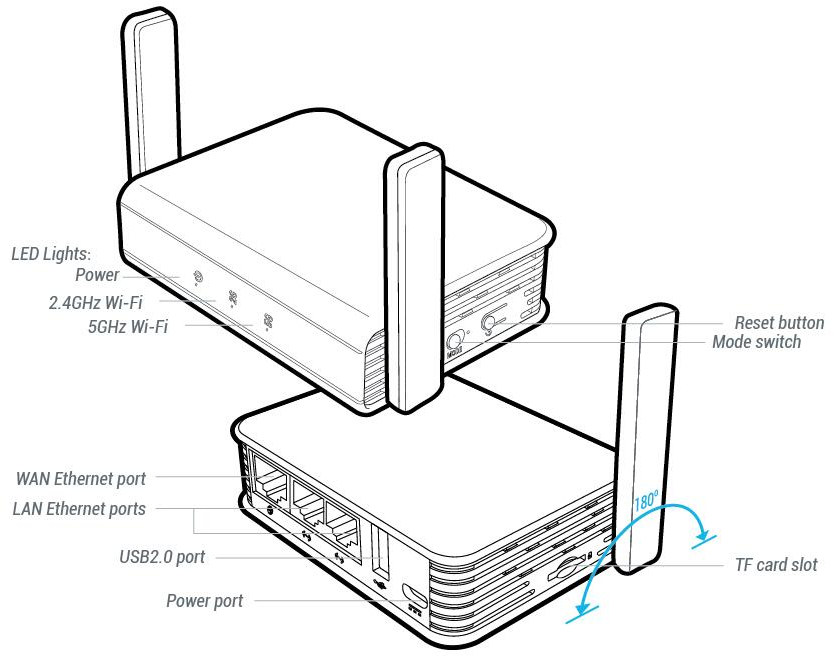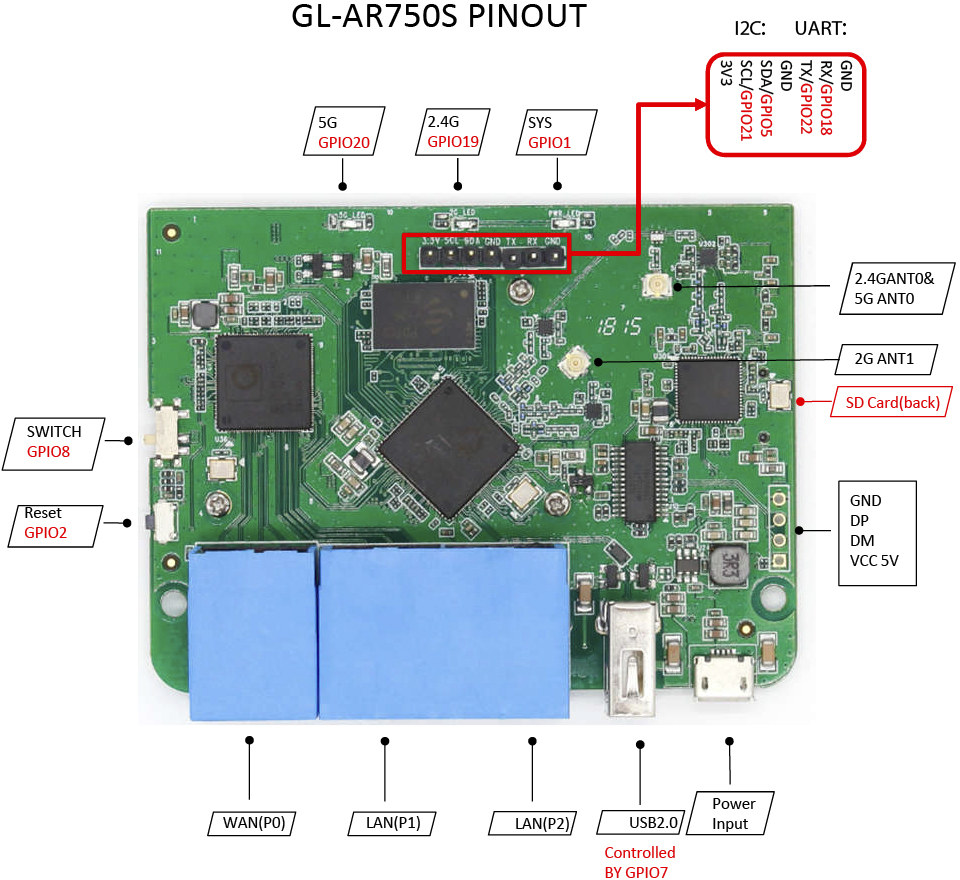A couple of months ago, we wrote about GL.iNet Mudi portable WiFi router with built-in 4G LTE connectivity and supporting features such as the Tor Project, up to 25 VPN providers, and Cloudflare DNS over HTTPS or TLS.
Mudi was launched on Kickstarter and should start shipping very soon, but I was informed about another OpenWrt travel router from the company with GL.iNet Slate also supporting many of the same features, but doing away with built-in cellular connectivity and battery.
GL.iNet Slate (GL-AR750S-Ext) router specifications:
- SoC – Qualcomm QCA9563 MIPS 74Kc processor @ 775MHz
- System Memory – 128MB DDR2
- Storage – Dual Flash 16MB NOR + 128MB NAND, MicroSD card slot up to 128GB
- Networking
- Ethernet
- 1x Gigabit Ethernet WAN
- 2x Gigabit Ethernet LAN
- WiFi
- Dual-band 802.11 b/g/n/ac WiFi 5 with transmission rates up to 300Mbps (2.4GHz) + 433Mbps (5GHz)
- 2x 2dBi external antennas
- 3G/4G – Optional via cellular USB dongle
- Ethernet
- USB – 1x USB2.0 port, 1x Micro USB port for power only
- Misc – Reset button, mode switch
- I/O Expansion – Internal headers with I2C, UART, GPIO, 3.3V & 5V
- Power Supply – 5V/2A
- Power Consumption – < 6 Watts
- Dimensions – 100 x 68 x 24mm
- Weight – 86 grams
The USB port can be used to connect external storage (formatted with FAT32, NTFS, EXT4, EXT3, or EXT2), and 3G/4G LTE USB dongle. The router can be connected to the Internet over an Ethernet cable, in repeater mode, via a cellular dongle, or using tethering to your smartphone over the USB port. Secure communication can be configured with OpenVPN, Wireguard VPN clients/servers, or the Tor Network, and Cloudflare DNS over HTTPS or TLS can be optionally enabled in the user interface as well. You’ll find everything to get started on GL.iNet Docs website.
We can see 7-pin on the board for I2C, UART, and GPIOs, but those are not controlled from the user interface, and you may have to drive those from the command line or your own daemon. GL.iNet provides source code for U-boot, but I can’t see anything specific for OpenWrt from the company themself, and instead, you’ll find firmware and instructions on OpenWrt website. There’s also an alternative community firmware called ROOter GoldenOrb.
GL.iNet Slate travel router can be purchased for $69.99 on Amazon.
Thanks to Kelly for the tip

Jean-Luc started CNX Software in 2010 as a part-time endeavor, before quitting his job as a software engineering manager, and starting to write daily news, and reviews full time later in 2011.
Support CNX Software! Donate via cryptocurrencies, become a Patron on Patreon, or purchase goods on Amazon or Aliexpress







